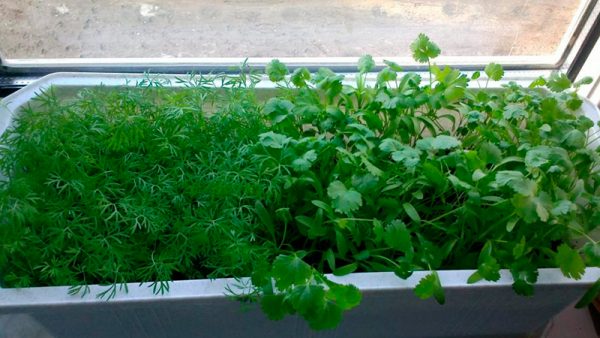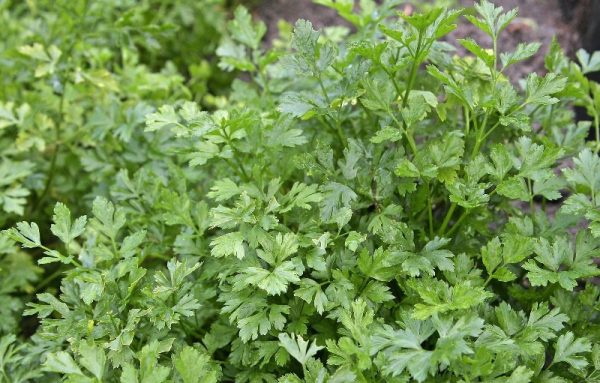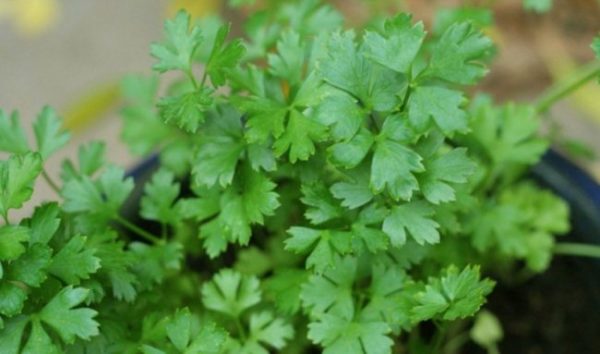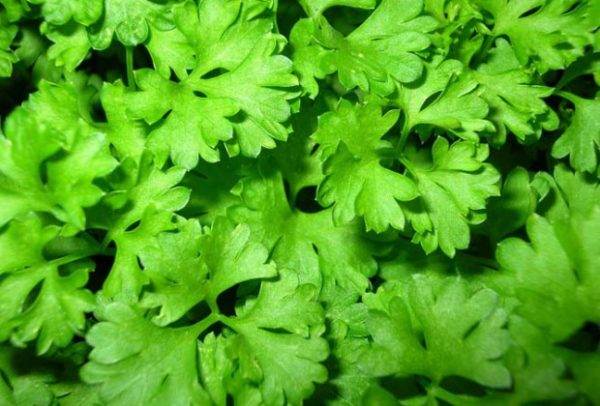How to plant parsley so that it sprouts quickly
Content
Soil preparation
Parsley loves light, fertile soil, moisture and sun, but it is better to grow it in slightly shaded places, protected from drafts. If there is a lot of water in the garden or the soil is too dense and dry, the parsley will grow poorly, it will give little greenery and weak roots that are not suitable for storage. It is better that there is a sufficient amount of moisture, and the soil allows air to pass to the roots.
The garden bed for her in the fall is fertilized with humus. It is best if the manure was applied under a previous crop, for example, cucumbers or cabbage, and parsley will grow well in this place next spring. In the spring, before planting parsley (or how to sow parsley), you can apply complex mineral fertilizers. You can add superphosphate, since she loves phosphorus and potassium, but is practically indifferent to nitrogen. Therefore, some summer residents plant parsley in the spring among the tomatoes, next to which it grows well. Many do not distinguish separate beds, grow dill and parsley throughout the garden, this does not always lead to a good harvest.
You can grow dill and parsley at home on the windowsill all year round, only in winter you will have to add lighting at home so that the greens do not stretch out too much. Most often, at home, leafy greens are grown from seeds in medium-sized pots or boxes with a depth of at least 20 cm.But it is possible to plant root parsley, you can even plant a root crop in a pot on the windowsill, just choose a deep pot, and cut the root a little so that it is easier for him to get water in new conditions.
In order to grow dill or parsley at home on a windowsill or balcony, it will be correct to take a light, nutritious land, it is imperative to arrange a good drainage layer. Greenery grows quickly on the windowsill, you only need an optimal watering regime and light.
Video "An example of planting for summer residents"
Demonstration video with an example of how you can plant greens in the country.
How to soak seeds
Dill and parsley seeds are sown before winter or early spring. In autumn, you can do this if the winter is not too harsh or there are no thaws. If there is a thaw, the seeds can germinate, and the frost will kill them later. Parsley can withstand temperatures not lower than -8 degrees, more severe frosts are destructive for it. It is safer to plant dill and parsley in early spring when the ground is thawed. Around the end of April, this occurs in the middle lane. If dry unprepared seeds are sown on a garden bed, they will sprout for a long time, so in the spring they are usually soaked or even germinated at home.
You can put the seeds on a cloth soaked in water, cover with gauze on top, you can simply fill them with warm water, cover the container with glass. Experienced gardeners do this: pour the seeds with hot water, drain them after cooling, pour them again with hot water - this is done for 1 - 2 days. After that, the seeds are put on a wet cloth and left to hatch (several days). Planting parsley with hatched or sprouted seeds is a common practice, this is done so that the greens spring up quickly.
It must be said that seed soaking has opponents. There is an opinion that together with the ether shell, due to which the greens of parsley, dill, and carrots emerge so slowly, the potassium supply also dissolves. This leads to the fact that the sowing can germinate quickly, but the sprouts are weak.
You can check everything only in practice, because everyone decides for himself how to grow parsley, whether it is worth soaking the seeds. Summer is not too long, wait for the greenery to sprout not 1 week, but as many as 3 - not everyone will choose. You can also fertilize before planting the parsley.
Landing in the ground
After the earth thawed, excess water came off, mineral fertilizers were added to the soil, you can start sowing. In the garden, grooves are made, 2 cm deep, seeds are laid, watered with water, and covered with earth from above. Some gardeners shed furrows before sowing with hot water, and then do not water them from above. 0.5 g of seeds are sown per 1 square meter of the bed. A distance of 15 - 20 cm is left between the furrows, the seeds are not planted too often.
In the northern regions, parsley and dill are sown in the spring like this: in March, snow is swept away from the garden, the furrows are spilled with boiling water, sprinkled with wood ash, seeds are laid, sprinkled with dry earth, snow is thrown over the garden bed. Seedlings are very friendly appear quickly as soon as the ground thaws. For this method, it is necessary to prepare grooves on the site in the fall, and hide the bag of earth in a barn so that it does not freeze.
You can grow seedlings at home on a windowsill, and as soon as the ground thaws, plant them in open ground. This method is only suitable for leaf culture, but the root must be sown immediately to a permanent place, because the taproot, in order for it to grow well, cannot be transplanted from place to place. At home on the windowsill at a positive temperature, shoots will appear quickly, on the 5th - 6th day. After 1 - 1.5 weeks, a couple of real leaves will appear. After that, you can transplant the plants - plant them in a garden bed, or just less often plant them in other pots at home.
How to care for parsley
If you sow parsley or dill frequently, you will need to thin them several times. To form a good outlet, the distance between the plants should be at least 10 cm in the garden, and at home you can leave 5 cm on the windowsill or balcony. She loves moisture, so it needs to be watered, but do it sparingly - if the water stagnates, the plants will rot. It will be correct to arrange drip irrigation from the time the seedlings emerged from the seeds.
Oddly enough, it is easier to do this in the garden than at home - at home on the windowsill it is difficult to keep track of the humidity level, so you will have to pay attention to dill and parsley every day. It is necessary to check and adjust soil moisture.The rest of the care for dill and parsley in the garden consists in the timely elimination of weeds, periodic feeding (if required).
When a stalk appears with three fully grown leaves, you can harvest. You need to cut off the outer stems near the ground - this stimulates growth, the parsley will quickly grow greens. If you pick the leaves from the tops, it will slow down growth. In 60 - 70 days after it has sprung up, maturity sets in: in each rosette there are at least 6 branches, the leaves grow up to 15 cm with proper care.
During the summer, parsley gives 4 crops. Parsley and dill have a spicy smell that insects do not like, you need to use it - grow them all over the garden (if you can create optimal conditions). By growing them at home on a windowsill, you don't have to worry about flies and mosquitoes all summer long.
Video "Secrets of growing parsley"
Informational video on how to grow parsley on your own, and which varieties are better to choose.






